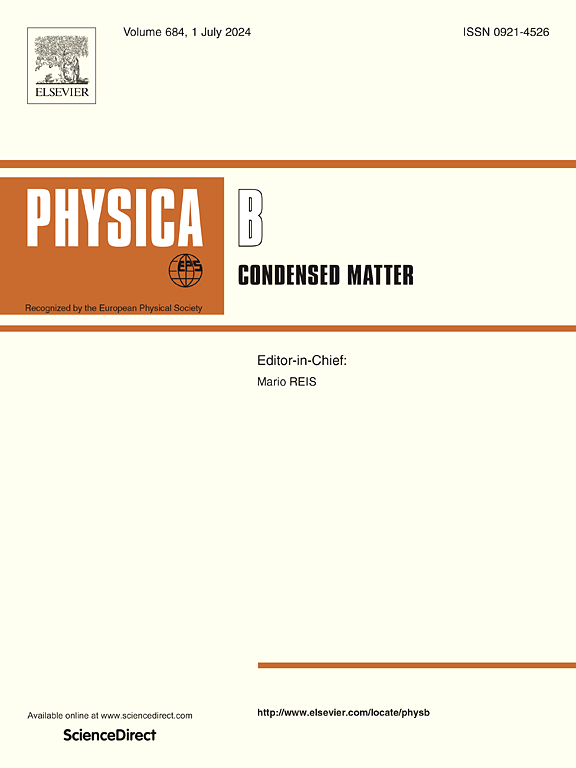Three-dimensional mathematical solution of static and free vibration of graphene origami-enabled auxetic metamaterial thick plates
IF 2.8
3区 物理与天体物理
Q2 PHYSICS, CONDENSED MATTER
引用次数: 0
Abstract
This study comprehensively investigates the static bending and free vibration characteristics of functionally graded graphene origami-enabled auxetic metamaterial (FG GOEAM) plates with a copper matrix. By leveraging three-dimensional linear elasticity theory, constitutive relations, and equilibrium/motion equations are derived and reformulated through two pairs of transformations into two independent, order-reduced sets of spatial state-space equations, distinguishing in-plane and out-of-plane motions. This novel formulation establishes a unified framework applicable to plates of arbitrary thickness (from thin to highly thick) while enhancing numerical efficiency. The mechanical properties of the metamaterial are predicted via an AI-assisted model. The governing equations are solved using the transfer matrix method under three boundary condition types: elastic simple supports, rigidly slipping edges, and their combinations. The parametric study systematically evaluates nine distinct dispersion pattern combinations of graphene origami (GOri) platelets across the plate's thickness, alongside variations in folding degree, weight fraction, and temperature. Key findings reveal that GOri dispersion patterns critically influence structural performance: the configuration maximizes stiffness, yielding the highest natural frequencies (37–39 % higher) and minimal central deflection (90 % lower), whereas induces the softest response, with non-monotonic stiffness behavior observed at intermediate GOri weight fractions.
求助全文
约1分钟内获得全文
求助全文
来源期刊

Physica B-condensed Matter
物理-物理:凝聚态物理
CiteScore
4.90
自引率
7.10%
发文量
703
审稿时长
44 days
期刊介绍:
Physica B: Condensed Matter comprises all condensed matter and material physics that involve theoretical, computational and experimental work.
Papers should contain further developments and a proper discussion on the physics of experimental or theoretical results in one of the following areas:
-Magnetism
-Materials physics
-Nanostructures and nanomaterials
-Optics and optical materials
-Quantum materials
-Semiconductors
-Strongly correlated systems
-Superconductivity
-Surfaces and interfaces
 求助内容:
求助内容: 应助结果提醒方式:
应助结果提醒方式:


